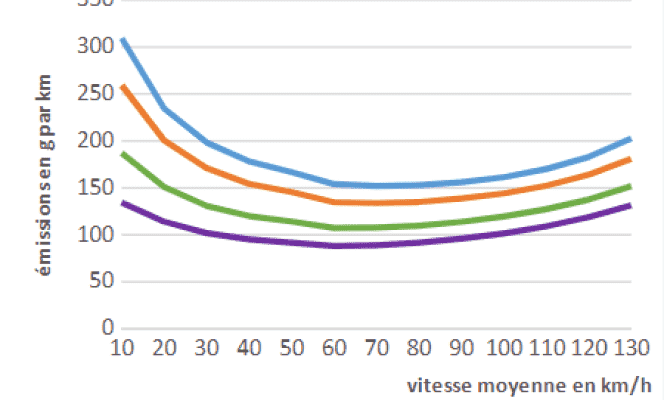Xavier Bertrand, president of the Hauts-de-France region, was the guest de France Bleu Gironde, Wednesday 22 September. During this interview, the candidate for the 2022 presidential election was asked about the decision of the mayor of Bordeaux, Pierre Hurmic (Europe Ecologie-Les Verts, EELV), to lower the authorized speed to 30 km / h in the streets of the town from January, as the City of Paris has just done. Here is what he said:
“There is a study by an institute, the Cerema, which depends on the ministry [de la transition écologique et solidaire], which shows that at 30 km / h we pollute more than at 50 km / h. I am not the one indicating it, it is this study. The real subject is that there are many elected officials who no longer want the car in town. “
A study shows that we pollute more at 30km / h than at 50km / h. Some elected officials driven by ideology no longer want… https://t.co/SWVyANWfNJ
What study is Xavier Bertrand talking about?
The right-wing presidential candidate refers here to a publication from the Center for Studies and Expertise on Risks, the Environment, Mobility and Planning (Cerema), an establishment placed under the supervision of the Ministry of Ecological and Inclusive Transition. Put online on August 17, this report entitled “Road emissions of atmospheric pollutants: curves and influencing factors” dates back to the month ofApril and updates an information note published in 2009. “In the context of the evaluation of infrastructure projects or transport projects, it is interesting to know the factors that have a direct impact on the rates of emissions of atmospheric pollutants and greenhouse gases”, explains the Cerema by way of introduction.
Vehicle speed is the first factor influencing the release of atmospheric pollutants (fine particles, nitrogen dioxide, greenhouse gases, etc.). It is on this point that the publication cited by Xavier Bertrand lingers. It presents the curves of pollutant emissions, as a function of speed, for three types of vehicles: heavy goods vehicles, light commercial vehicles (vans) and light vehicles. Among the lessons learned, Cerema notes that for a particular vehicle, pollutant emissions are “Minimum” at 70 km / h. And to add:
“It will be noted that for light vehicles as for heavy goods vehicles, emissions are significant at very low speed (up to approximately 30 km / h), which means that road traffic congestion situations are very penalizing from the point of view of air quality. “
This report, published a few days before the 30 km / h limit in Paris on August 30, was taken up by many media to explain that this measure would generate more pollution than traffic at 50 km / h. However, as had already noted the Stop on Images site, the report does not quite say that.
Why is this report misinterpreted?
The Cerema itself, in an explanatory note, warns against misinterpretations of its report. He specifies that these figures do not allow us to “Conclude that speeds limited to 30 km / h are necessarily more negative in terms of emissions than speeds at 50 km / h” and that the conclusions of the report do not allow “To evaluate public mobility policies such as speed reduction measures in urban areas (zone 30 for example). “
For this, the study center returns to its methodology. He specifies that this is a comparison based on average speeds including different driving cycles on city routes but also on “interurban” routes (national roads, for example) and on the motorway:
“These results cannot be assimilated to constant speed traffic conditions, nor to traffic conditions in zones with authorized speed limits, in particular in built-up areas (zone 30 for example). “
To reduce pollution, the challenge is to make traffic more fluid
Another clarification: the first factor that influences pollutant emissions is not speed, but acceleration. Congested traffic, multiplying acceleration phases, is “Much more emissive than regular and peaceful traffic”, underlines Cerema, which considers that, in order to reduce pollution, the challenge is to make traffic more fluid and that “Better channeling transit towards certain axes during the reorganization of traffic plans for the establishment of zones 30 contributes in particular”.
The effects of switching to 30 km / h on pollution are certainly debatable. However, the initial aim of such a measure is to improve the safety of pedestrians and cyclists, as well as to reduce noise pollution, as explained on Twitter David Belliard, EELV deputy at the Paris town hall in charge of transport.
The municipalities that have adopted this limitation actually hope to discourage residents from taking their cars, and make them prefer public transport or cycling. It is these changes in mobility, induced by the measure, that will have significant effects on reducing pollution in cities.
